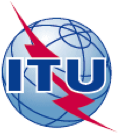 |
ITU-T L.1330 - Energy efficiency measurement and metrics for telecommunication networks |
|---|
| Name of Initiative/Methodology |
Energy efficiency measurement and metrics for telecommunication networks
|
|---|
| Link to the latest published version |
L.1330 (03/2015): Version 1.0
https://www.itu.int/rec/T-REC-L.1330-201503-I/en
|
|---|
|
Developed by
|
The International Telecommunication Union (ITU) |
|---|
| History and Status |
- Approved in March 2015
- Publicly available and used
- Developed jointly by ITU-T Study Group 5 and ETSI TC EE and published respectively by ITU and ETSI as Recommendation ITU-T L.1330 and Standard ETSI ES 203 228
|
|---|
| Involved companies / parties |
- The Study Group 5 of ITU-T is responsible for studying ICT environmental aspects of electromagnetic phenomena and climate change.
- The SG5 includes Huawei, Hitachi, Telecom Italia, Orange, Littelfuse, Ericsson, Epcos AG, the JRC, TU Budapest, Aalto University, ETRI, NTT
|
|---|
| Scope |
 Organisation env. accounting Organisation env. accounting
 Scope 1 Scope 1
 Scope 2 Scope 2
 Scope 3 Scope 3
|
 Product env. assessment Product env. assessment
 Life cycle approach Life cycle approach
 Use phase only Use phase only
|
|---|
|
 GWP GWP
 Energy (focus on secondary energy) Energy (focus on secondary energy)
|
 Other environmental impacts Other environmental impacts
 KPIs (Data energy efficiency & Coverage Energy Efficiency) KPIs (Data energy efficiency & Coverage Energy Efficiency)
|
| System(s) covered by the methodology |
- Radio access parts of the mobile network (MN): radio base station, backhauling systems, radio controllers and other infrastructure radio site equipment. Terminal (end-user) equipment (e.g. home BSs and WiFi access points) is out of scope.
- Technologies covered: global system for mobile communications (GSM), universal mobile telecommunications communications and long-term evolution (including LTE advanced)
- Three categories of subnetworks are considered and defined by topologic, geographic or demographic boundaries: (i) capacity limited networks representing urban and dense urban networks; (ii) suburban networks with high requirements for coverage and capacity; (iii) rural networks, which are usually coverage limited
|
|---|
| Goals |
- Define the topology and level of analysis necessary to assess the energy efficiency of mobile networks
- Define metrics for mobile network energy efficiency
- Define methods for assessing (and measuring) energy efficiency in operational networks
- Allow better comprehension of network energy efficiency
|
|---|
| Generic features |
- The measurement shall be weekly, monthly or yearly.
|
|---|
| ICT-specific features |
- Refer to dedicated standards for power consumption and energy efficiency measurements of individual network elements (e.g. ITU-T L.1310 for radio base station)
- Two categories of parameters are needed for the energy assessment of a MN:
- Parameters required to calculate the network energy efficiency (energy consumption, delivered bits, coverage, etc.)
- Parameters that describe the network characteristics: not required in the calculation, but used to interpolate from the measured subnetwork to a larger network (population density, coverage area, climate zones, etc.)
- Energy consumption metrics of the MN:
- Sum of the energy consumption of equipment included in the MN under investigation (base station, site infrastructure, backhaul and control nodes)
- If the control node supports a larger MN than assessed, only a proportional share of is considered
- Measurement: based on information provided by utility suppliers, by MN integrated measurement systems or by site / equipment sensors. When a MN integrated measurement system is available, it should be used in addition to the utility provided for a more precise estimation of the consumption per radio access technology and MN operator
- Energy efficiency metrics of the MN:
- MN data energy efficiency: ratio between performance indicator and energy consumption, assessed during the same time frame
- MN coverage energy efficiency: ratio between area covered by MN under investigation and energy consumption when assessed during one year; mainly used to complement the data energy efficiency for MN handling low data volumes, in particular in rural areas
- Performance metrics are derived from parameters of the MN relevant for energy efficiency, e.g. total data volume delivered by all its equipment and its global coverage area
- Measurement of performance metrics (capacity, coverage area, etc.) are described
- Extrapolation of energy efficiency to larger networks is detailed.
- In particular, the measured subnetworks ("partial" networks) shall be extrapolated to a complete network ("total" or "overall" networks) according to demography, topography and climate classifications. The extrapolation shall be based on statistical information that indicates how recurrent the subnetwork is within the total network to be addressed
- If the total network to be addressed is not completely known in terms of demographical, topographical or climatological composition, or if the measurements are executed only in some and not all subnetworks, the perceptual recurrence of each subnetwork shall be indicated with respect to the global one.
- If the exact composition of the total network is known, then extrapolation shall be made to achieve the information valid for the entire total network.
- Implementation examples are provided in appendix.
|
|---|
| Examples of implementation / experience feedback |
None identified
|
|---|
| Interaction with other methodologies |
- [ITU-T L.1310] Recommendation ITU-T L.1310 (2014), Energy efficiency metrics and measurement methods for telecommunication equipment.
- [ETSI TS 123 203] Digital cellular telecommunications system (Phase 2+); Universal Mobile Telecommunications System (UMTS); LTE; Policy and charging control architecture (3GPP TS 23.203 version 12.6.0 Release 12).
- [ETSI TS 125 104] Universal Mobile Telecommunications System (UMTS); Base Station (BS) radio transmission and reception (FDD) (3GPP TS 25.104).
- [ETSI TS 132 405] Digital cellular telecommunications system (Phase 2+); Universal Mobile Telecommunications System (UMTS); LTE; Telecommunication management; Performance Management (PM);
- [ETSI TS 132 412] Digital cellular telecommunications system (Phase 2+); Universal Mobile Telecommunications System (UMTS); LTE; Telecommunication management; Performance Management (PM) Integration Reference Point (IRP): Information Service (IS) (3GPP TS 32.412 version 12.0.0 Release 12).
- [ETSI TS 132 425] Telecommunication management; Performance Management (PM); Performance measurements Evolved Universal Terrestrial Radio Access Network (E-UTRAN) (3GPP TS 32.425 version 12.0.0 Release 12).
- [ETSI TS 136 104] Evolved Universal Terrestrial Radio Access (E-UTRA); Base Station (BS) radio transmission and reception (3GPP TS 36.104 version 12.5.0 Release 12).
- [ETSI TS 136 314] Evolved Universal Terrestrial Radio Access Network (E-UTRAN); Layer 2 – Measurements (3GPP TS 36.314 version 12.0.0 Release 12).
- [ETSI TS 152 402] Digital cellular telecommunications system (Phase 2+); Telecommunication management; Performance Management (PM); Performance measurements – GSM (3GPP TS 52.402 version 11.0.0 Release 11).
- [ISO/IEC 17025] General requirements for the competence of testing and calibration laboratories.
|
|---|





 © 2018 ICTFOOTPRINT.eu – ICTFOOTPRINT.eu has received funding from the European Commission’s Horizon 2020 research and innovation programme under the Grant Agreement no 690911. The content of this website does not represent the opinion of the European Commission, and the European Commission is not responsible for any use that might be made of such content.
© 2018 ICTFOOTPRINT.eu – ICTFOOTPRINT.eu has received funding from the European Commission’s Horizon 2020 research and innovation programme under the Grant Agreement no 690911. The content of this website does not represent the opinion of the European Commission, and the European Commission is not responsible for any use that might be made of such content.